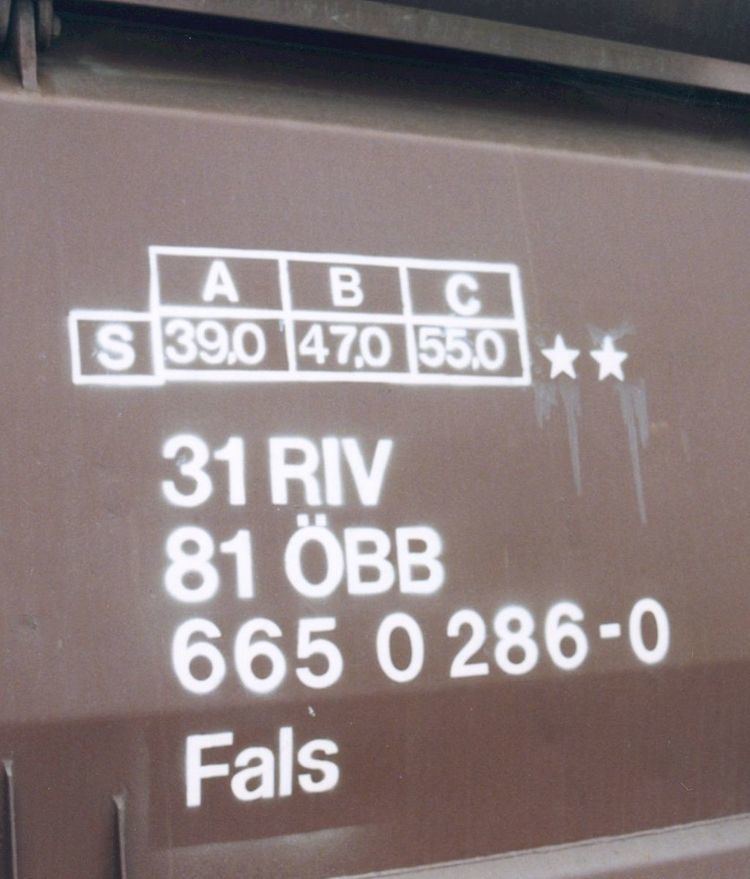 | ||
Wagon numbers (or coach numbers) are key data for railway operations. They enable a railway wagon or coach to be positively identified and form a common language between railway operators, infrastructure companies and the state authorities. The system of wagon numbering has been laid down by the International Union of Railways (Union internationale des chemins de fer or UIC) and is similar to that used for the locomotives and multiple units. Vehicle numbering is now governed by the Intergovernmental Organisation for International Carriage by Rail and in Technical Specifications for Interoperability (TSI) of the European Union.
Contents
- Calculation of the self check digit
- Examples
- Country code
- Reading of numbers
- Numbering systems
- References
The complete wagon number comprises 12 digits. The individual digits have the following meaning:
Calculation of the self-check digit
The digits are multiplied individually from right to left alternately by 2 and 1, and digit summed using the Luhn algorithm. The difference between this sum and the next multiple of ten is the check digit, placed after the eleventh digit, separated by a dash.
Examples
Wagon number: 21-81-2471217
2 1 – 8 1 – 2 4 7 1 2 1 7 multiplying by 2 1 2 1 2 1 2 1 2 1 2 gives4 1 16 1 4 4 14 1 4 1 14 sum = 37, next multiple of ten = 40 => check digit = 3Wagon number: 51-80-0843001
5 1 8 0 0 8 4 3 0 0 1 multiplying by 2 1 2 1 2 1 2 1 2 1 2 gives10 1 16 0 0 8 8 3 0 0 2 sum = 30, next multiple of ten = 30 => check digit = 0Country code
At the beginning of 2006 the country replaced the owner (almost exclusively state railways), with the owner now indicated by following letters. For example, for a vehicle registered in Germany on the AAE, which had its own code as a private railway, "68 AAE" became "80 D-AAE". (see also UIC country code)
Reading of numbers
Numbers are read visually, the method of choice today (2008). No railway is able to read the number automatically with the required reliability (less than 1 error in 10,000). Using OCR readers the numbering (DB AG: Font Gerade Normschrift DIN 16 Variant DB) can be only be read to an accuracy of no better than 5% (1 in 20).
Numbering systems
The UIC has the following numbering systems, as detailed in leaflets:
These agreements have not yet achieved the status of a standard or norm.
